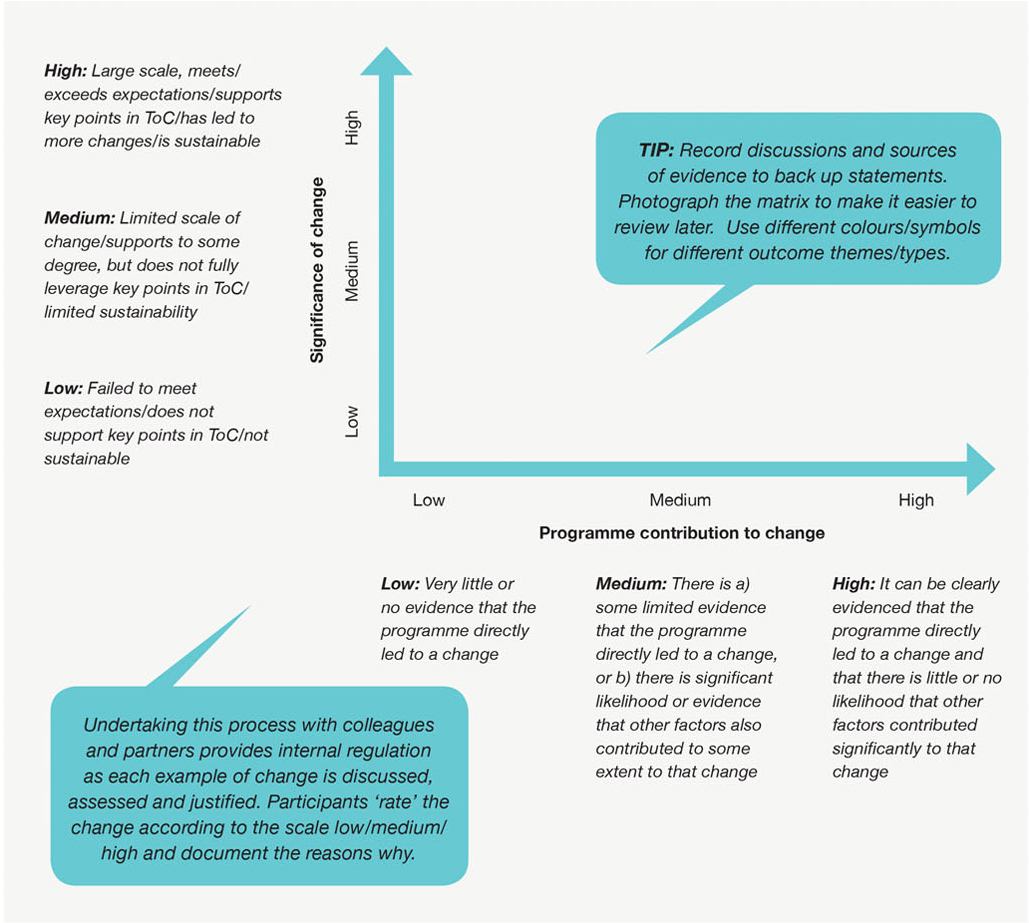
This tool is most useful at the implementation, monitoring and adaptation stage. If used for baseline or context analysis, it is also useful at the design stage. It is important to be aware that data collection methods should be considered at design stage in order to ensure the right methods have been selected for what the tool seeks to measure. It can be used together with:
1.1 Understanding the VE challenge
1.4 Prioritisation of factors
2.2 Articulating change
4.3 Prioritising indicators
5.2 Context monitoring (timeline) tool





